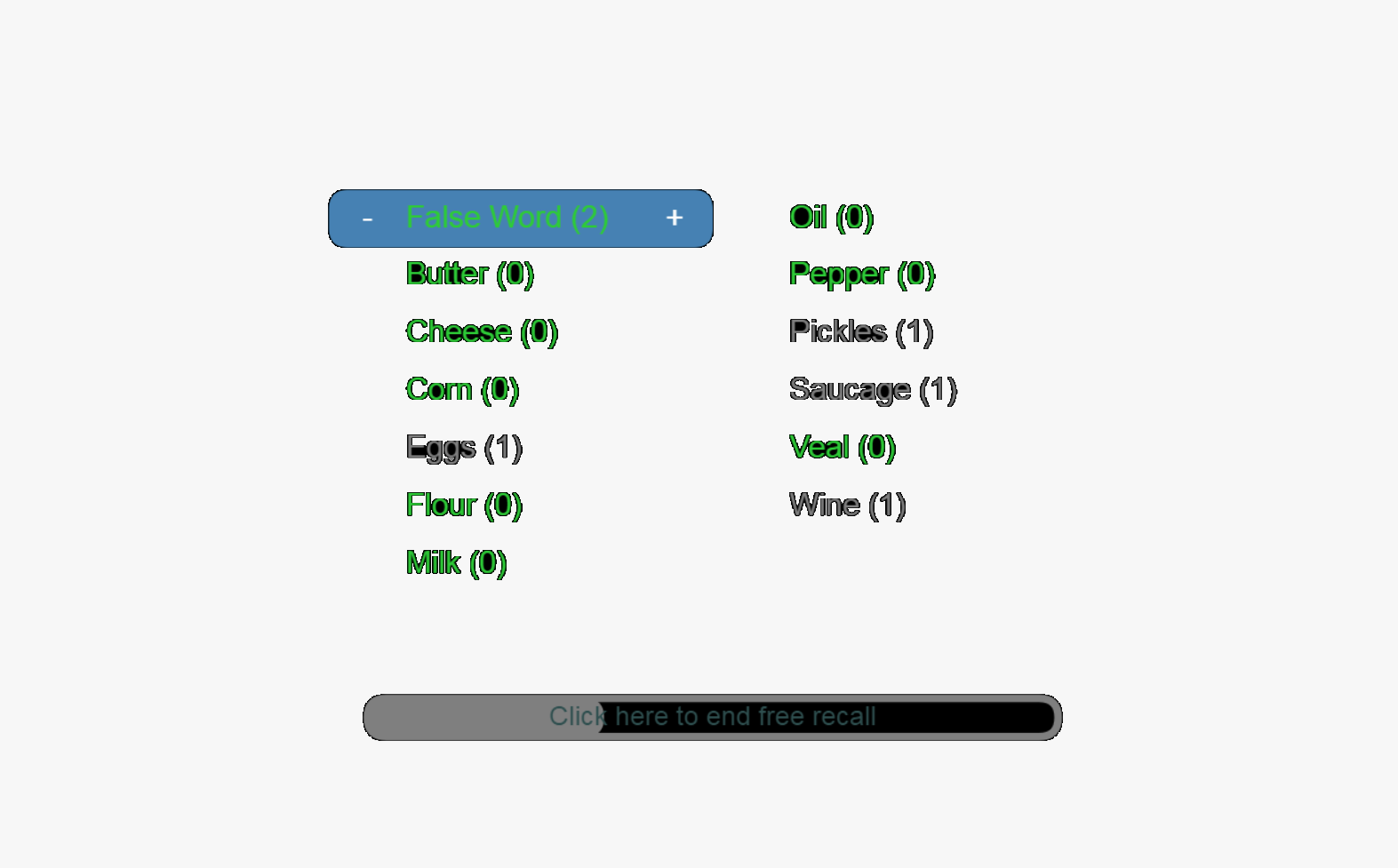International Shopping List

Remembering shopping lists when shopping in the store is a typical example of using verbal memory. To test verbal memory in the lab, subjects learn a set of words during one or more study trials. At the end of the retention interval (which may last only a few seconds or minutes in the case of immediate testing), memory performance is probed either by explicit recall or recognition. Learning can be studied by repeated presentations of the word list, or repeated recognition tests with feedback.
Subjects’ abilities to learn, retain, and retrieve a specific word largely depend on a variety of semantic and lexical features. The most important characteristics that influence these abilities are Paivio’s scales of imagery and meaningfulness (Paivio, 1969, 1976).
The International Shopping List Test (ISLT) is a standardized procedure using repeated presentation and free recall of shopping items to test verbal memory (Lim at al,, 2009). Instead of providing a predefined pool of words, the ISLT provides a heuristic of how to create a list of 12 shopping items. Researchers are asked to determine the most common grocery shopping items for a given culture or country. The underlying rationale of this heuristic is that this procedure will generate shopping items that are quite similar with respect to imagery, meaningfulness, and familiarity.
This version of ISLT provides default shopping list in different languages taken from publications, but researchers may enter their own shopping items to create one or more custom lists of any length. The presentation and free recall is performed by a test moderator who reads the items from the computer screen to the participants and counts the recalled items on the computer.
By default, a session consists of three iterations of presentation and free recall. But number and order of presentation, free recall and optional recognition blocks can be configured in a flexible way to make other session designs possible. For repeated sessions (Rahimi-golkhandan at al., 2012), you can introduce parallel forms by simply creating multiple test configurations using different items.
Besides common scores like total number of recalled items, instructions, and repetitions, the ISLT paradigm also captures primacy and recency effects, and detailed data about the order and timing of the free recall to provide information about the memory strength of each recalled item (Thompson at al., 2012).
Publications
Lim YY, Prang KH, Cysique L, Pietrzak RH, Snyder PJ, Maruff P. A method for cross-cultural adaptation of a verbal memory assessment. Behav Res Methods. 2009;41(4):1190-200.
Paivio, A. (1969). Mental imagery in associative learning and memory. Journal of Experimental Psychology, 76, 241-263
Rahimi-golkhandan S, Maruff P, Darby D, Wilson P. Barriers to repeated assessment of verbal learning and memory: a comparison of international shopping list task and rey auditory verbal learning test on build-up of proactive interference. Arch Clin Neuropsychol. 2012;27(7):790-5.
Thompson TA, Wilson PH, Snyder PJ, et al. Sensitivity and test-retest reliability of the international shopping list test in assessing verbal learning and memory in mild Alzheimer’s disease. Arch Clin Neuropsychol. 2011;26(5):412-24.
Links
http://www.datavis.ca/online/paivio
http://en.wikipedia.org/wiki/Free_recall
http://en.wikipedia.org/wiki/Memory
Configuration Options
| Test Mode | : | Moderated | Self |
| Blocks | : | Presentation | Free Recall (paper)| Free Recall (computer)| Recognition |
| Iterations | : | Auto Increment | fixed number |
| Sequence | : | Digits, Letters, Alternating |
| Timing | : | Presentation of item, time for recall block, Delay before next block |
| Feedback | : | Yes | None |
| Word List | : | User defined items and distractors |
| Presentation | : | random order | fixed variants |
